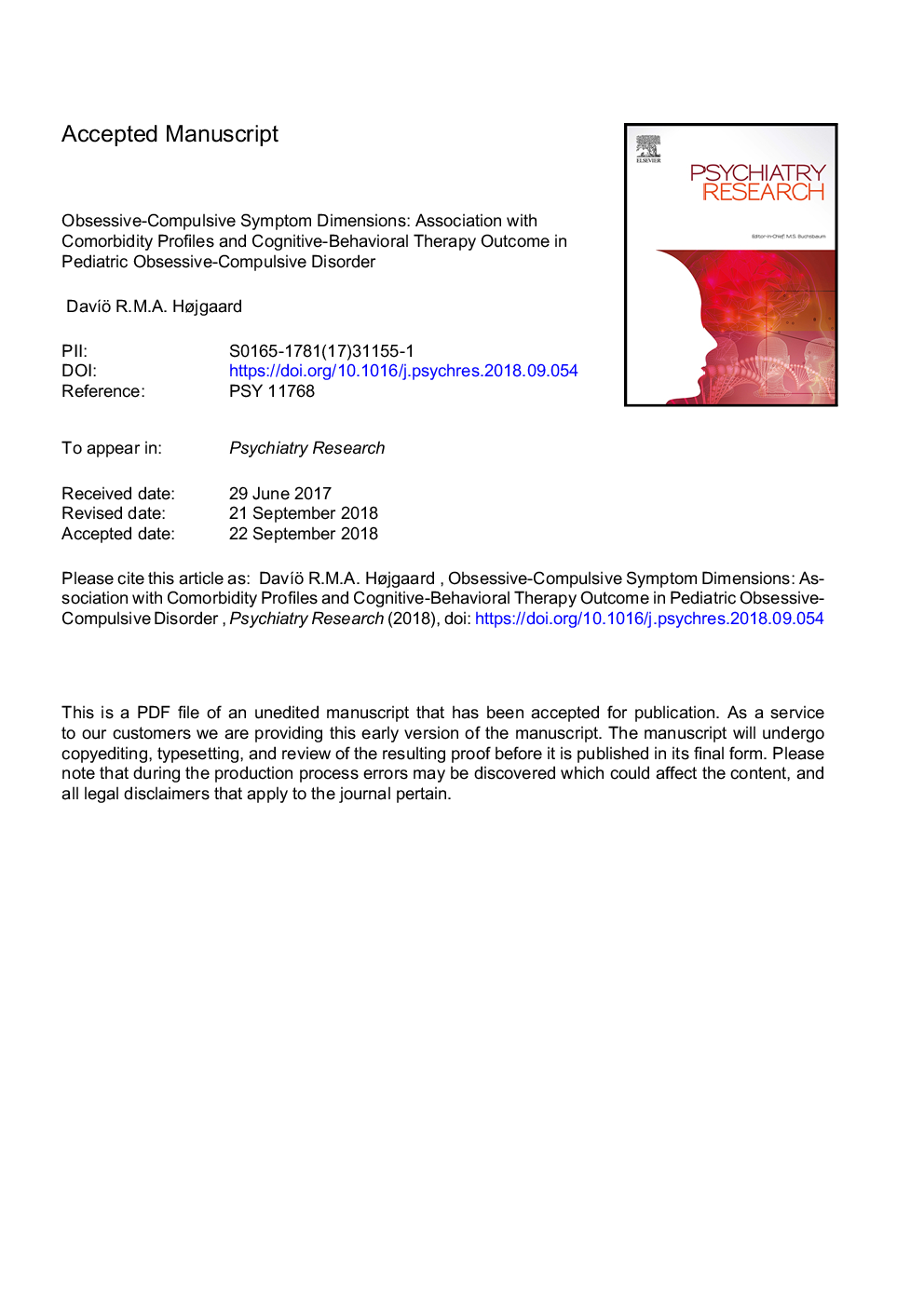| Article ID | Journal | Published Year | Pages | File Type |
|---|---|---|---|---|
| 11024093 | Psychiatry Research | 2018 | 28 Pages |
Abstract
Our aims were to examine: (1) classes of comorbid disorders in a sample of children and adolescents with Obsessive-Compulsive Disorder (OCD), (2) how these classes relate to obsessive-compulsive symptom dimensions, and (3) the extent to which obsessive-compulsive symptom dimensions predict Cognitive-Behavioral Therapy (CBT) outcome. Participants (Nâ¯=â¯269) were assessed with the Kiddie Schedule for Affective Disorders and Schizophrenia (K-SADS-PL) and the Children's Yale-Brown Obsessive-Compulsive Scale (CY-BOCS). Latent Class Analysis (LCA) was used to identify comorbidity classes. Regression analyses were used to evaluate symptom dimensions as predictors of treatment outcome and their relation to comorbidity classes. Comorbidity was included in the treatment outcome analyses as it can affect outcome. Comorbidity was best categorized by a three-class model and each class was distinctively correlated with the OCD symptom dimensions. Higher scores on the symmetry/hoarding factor increased the chance of responding to CBT by an odds ratio of 1.56 (pâ¯=â¯0.020) when controlled for age, gender, and comorbidity class. The harm/sexual factor (pâ¯=â¯0.675) and contamination/cleaning factor (pâ¯=â¯0.122) did not predict CBT outcome. Three clinically relevant comorbidity subgroups in pediatric OCD were identified. Patients who exhibited higher levels of symmetry/hoarding dimension were more prone to respond to CBT.
Related Topics
Life Sciences
Neuroscience
Biological Psychiatry
Authors
DavÃö R.M.A. Højgaard, Katja A. Hybel, Erik Lykke Mortensen, Tord Ivarsson, Judith Becker Nissen, Bernhard Weidle, Karin Melin, Nor Christian Torp, Kitty Dahl, Robert Valderhaug, Gudmundur Skarphedinsson, Eric A. Storch, Per Hove Thomsen,
